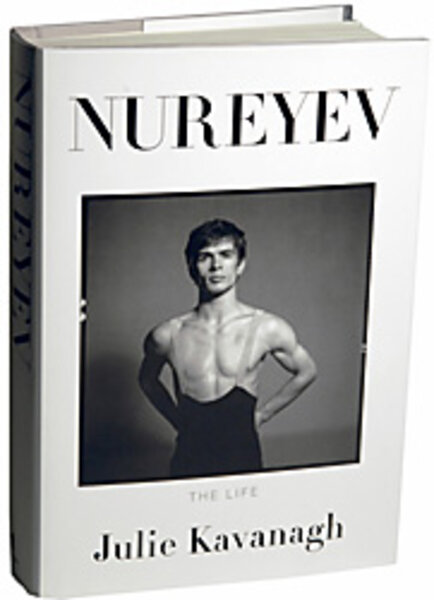Nureyev's was a life of drama and dance
Loading...
Rudolf Nureyev's life was dramatic. He was born on a train in Mongolia. (His mother and sisters were joining his father, a soldier in the Red Army.) In his 20s, on tour with the Kirov Ballet, he defected in Paris. His partnership with Margot Fonteyn of London's Royal Ballet is legendary. Afterward, he danced all over the world as a guest star or choreographer. His promiscuity, a penchant for dancing after his prime, and his passing in 1993 from AIDS form the dark side of the drama.
In Nureyev: The Life, journalist and author Julie Kavanagh puts us in the midst of the people who surrounded Nureyev, supporting or battling him (or both) throughout his career. Kavanagh had access to his papers, spoke to the key players in this drama, and traveled to Ufa, the town in the western Urals where he grew up. The book is dense with detail and character but haunted by a sense of loss.
My favorite photo is one of a teenage Nureyev leaping across a ballet studio in Ufa. His arms are flung overhead, his head tipped back, and his chest puffed out. He looks like a big bird trapped in the little gray room. It's no surprise that he would soon be dancing with the Kirov, then bolting from that company to the wider dance world in the West. For so many who speak in this book, he is the one that got away.
Nureyev's arrival in the West was a pivotal moment in dance history. But Kavanagh also shows us the sadness and shock among those he left behind and Nureyev's own enduring loneliness and longing.
She brings out multiple viewpoints at every turn. Often, the comments are unattributed, except in the notes section. This streamlines the narrative, but also gives it a surreal, gossipy feeling. Only Nureyev's voice, speaking English with no articles, is recognizable. And it is hard to keep track of them all, like reading a long Russian novel without one of those helpful family-tree diagrams.
Having left his biological family behind when he went to Leningrad for schooling at the Kirov, Rudik, as he was called affectionately, was first "adopted" by his teacher, Alexander Pushkin, and his wife, Xenia. Kavanagh describes the "kitchen culture" in Leningrad, where artists and intellectuals gathered around a dining-room table for long meals and discussion. Nureyev couldn't get enough of art and beauty. When he wasn't performing he was at concerts, churches, or museums. He heard Canadian pianist Glenn Gould and saw Danish dancer Erik Bruhn on tapes smuggled into the Soviet Union.
On arriving in England, he was soon ensconced with Maude and Nigel Gosling. Maude, a former dancer, wrote dance reviews with Nigel under the pseudonym Alexander Bland. They became lifelong friends. After Nigel's death, Rudolf looked after Maude, and she tenderly cared for him during his illness.
Nureyev was not an easy friend. He was even rude to his greatest partner, Margot Fonteyn. The older dancer gave a finish and an "English" elan to his still-emerging technique and style, while Nureyev reinvigorated and extended her career. For all her sweetness and purity onstage, Fonteyn was tough. Yet he could reduce her to tears in rehearsal. Still, they were loyal to each other till the end.
Dancer Violette Verdy said of Nureyev in 1986, "I'm convinced that his greatest years as a choreographer are still ahead when he has totally removed himself as a performer." This is poignant, as he died soon after producing the only work in which he did not perform, "La Bayadere," by Marius Petipa, for the Paris Opera Ballet.
The sadness of a talented life cut off early permeates the book. Nureyev's homosexual relationships, the brutal anonymity of 70s gay culture, and his passing from AIDS in 1993 are discussed at length. Too much length.
And dance becomes too academic. Kavanagh can give the pedigree of a work, the emotion behind a special curtain call, or the psycho-historical meaning of a pose. But she doesn't describe Nureyev in motion or attempt to portray the joy he must have taken in being airborne.
She does, however, give the intriguing life inside a ballet. Discussing Nureyev's production of "Sleeping Beauty" for the National Ballet of Canada, dancer Frank Augustyn says, "It was like jumping into a kangaroo's pouch. Rudolf knew exactly what he wanted to do and he was going to take us along with him. From the most arrogant to the shyest and most insecure dancer there – we all felt the same way. Something was happening that we'd never experienced before, and we knew it was going to be a wonderful ride."
[Editor's note: The original version misspelled the name of the book's author.]
• Maggie Lewis is a former dance critic for the Monitor.





